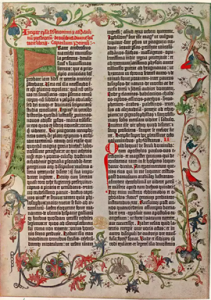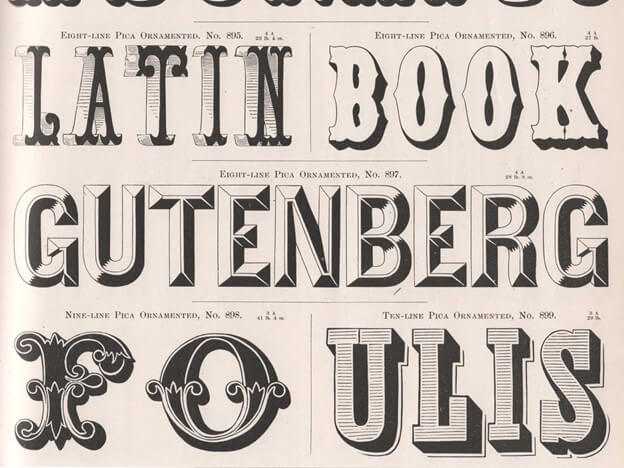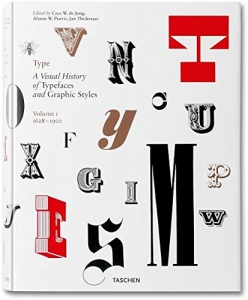A little Typeface History…
Fun Fact, actually really really cool fact: Hi&Lo is based in Mainz, Germany the same city where Johannes Gutenberg invented the world’s first printing press in 1455! He took a loan out from his brother-in-law after failed business venture and began creating a press to print text more efficiently. In Renaissance Europe, the arrival of mechanical movable type printing introduced the era of mass communication which permanently altered the structure of society. The first printed text that was mass produced was the bible which used some of the first structured typefaces seen by man.
Font and typefaces became a widely used structure and began to define and differentiate the meanings behind the printed word. With every typeface there is an extensive history describing their uses. We can now separate these typefaces into 5 main categories serif, Slab serif, Sans serif, script, and decorative.
a font developed in the middle 15th century was the first typeface used for “mass printing” this font is considered a “broken font” because the letters consist of multiple separate components with very decorative serifs.
Its origin is essentially the Roman alphabet. (This font is the font Johannes Guttenberg first used) Nowadays this is more a decorative font and not comfortably readable to us anymore. It is also still considered Script font.
This actually indicates that it resembles a handwriting with a flowing movement but since this script finds its origin in the font that was actually still written by hand in the monasteries, this first printed font is also classified as Script. These are considered a more “romantic” typeface. They are what we commonly describe as cursive today. There is a big difference between the old roman lettering and an actual handwriting but the classification simplifies this and also considers the origin. Another example for a script:
The first recorded Sans Serif font (a font without serifs) is called:
and was developed in 1896 and was the start of a rapid development in differentiating typefaces. This typeface grew popularity by being commonly used within technology. With technological advances it was easier to recognize and universally understood.
Decorative or display typefaces:
Every font has its unique history and guiding purpose in design today, as technology advances, we have access to every typeface at just the click of a button.
Nearly unbelievable to think that some fonts date as far back as to the fourteen-hundreds and how fast we learned to adapt to the modern typefaces and unlearned to read the old fashioned ones.
Wikipedia has an extensive list of the font examples and the development of all classifications.
https://en.wikipedia.org/wiki/List_of_typefaces
How a font is constructed, we will tell you in a different article.
In the meantime, if you have any questions, of how to select the perfect font for your presentation or documents, we have a great Book recommendation:
If you have any questions, of how to select the perfect font for your presentation or documents, please feel free to contact us. We are looking forward to hear from you.










 HiLo_Agency
HiLo_Agency HiLo_Agency
HiLo_Agency